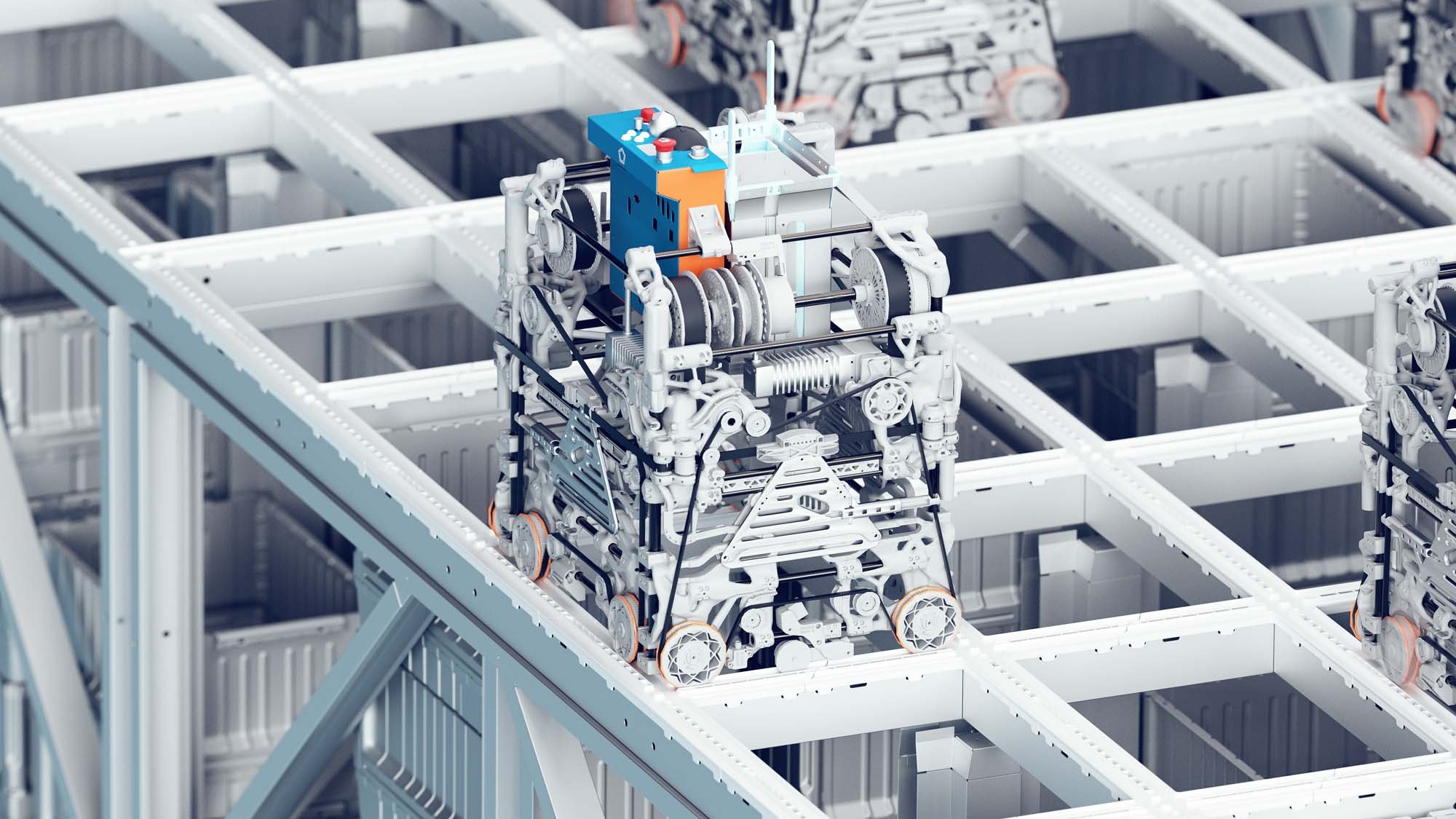According to Interact Analysis, the global warehouse automation market is expected to double from $26.8bn in 2019 to $55.5bn by 2026. Warehouse automation offers significant improvements in productivity, accuracy, speed, and cost-effectiveness while future-proofing your operations against ever-growing customer demand. If you're considering automating your warehouse, here are ten real-world reasons to invest.
The question is no longer “can I afford to automate?”, it's “can I afford not to?"
01.
Know Where Everything Is (and Isn't)
Inventory distortion remains a real issue in many warehouses. IHL Group estimated the global cost of inventory distortion in 2023 to be $1.77 trillion, with out-of-stocks accounting for $1.2 trillion and overstocks totaling $562 billion.
By choosing a best-of-breed warehouse automation solution, you can make this problem disappear almost entirely—with accurate stock levels, streamlined reordering processes, minimal shrink and purge, and optimal inventory—even during peak periods. Many automated systems, including the Ocado Storage and Retrieval System (OSRS), provide robust real-time inventory tracking, so you know what’s in stock with a very high degree of accuracy at all times. This is reflected in Ocado’s own grocery warehouses, where precise stock management and real-time product availability achieves 99.8% fulfillment rates.
This precision marks one of the key benefits of warehouse automation, reducing carrying costs and enhancing customer satisfaction by ensuring products are always available and customers aren’t left disappointed by post-order out of stock notifications.
02.
Keep Your Employees (Happy)
There’s no denying that the warehouse sector has labor issues. Individuals may find less strenuous and more engaging job opportunities in other industries. Working in a traditional warehouse presents both physical and mental challenges, and the mounting demands on employees are deterring many from pursuing careers in this field.
Gartner predicts that by 2028, there will be more smart robots than frontline workers in manufacturing, retail and logistics due to labor shortages. We believe there’s another outcome—investing in cutting-edge warehouse automation frees your workers up to perform more interesting, value-add tasks such as exception handling. One of the human benefits of warehouse automation is that this technology is more interesting to interact with, too—Gartner also predicts that by 2028, 40% of large warehouse operations will deploy employee engagement tools to motivate their workforces. OSRS picking workstations, which can be used to gamify picks per hour, make for a more engaging and empowering work environment.
Autonomous mobile robots such as our Chuck AMR can be rapidly deployed alongside your employees, assisting in picking and breezing through usually monotonous and physically arduous tasks. And when things get really busy (we’re talking Black Friday or the Holidays), warehouse automation benefits your employees by keeping their workloads manageable and consistent during the tidal wave of incoming orders (and the wave of returns a week later…)
Learn more: Warehouse Robots: Essential Guide to Modern Robotics in the Warehouse
Warehouse automation also works when humans can’t or won’t—through the night, during holidays, in very cold environments for long periods or when labor laws forbid it.
03.
Get It Right First Time, Every Time
When employees are repeatedly performing manual tasks which require perfect precision—such as picking from a range of similar SKUs—they will inevitably make mistakes. The problem is exacerbated by an inexperienced, disengaged or overextended workforce.
Estimates for the cost of a mispick vary wildly, but are generally believed to be between $25 and $100. Even if a mispick remains a rare occurrence, the cost will soon add up.
And yet human error extends far beyond picking—it encompasses a wide array of mistakes, including inaccurate data entry, improper labeling of items at induct, incorrect handling of products, and the use of inappropriate procedures.
Warehouse automation solves many of these issues, enabling near-perfect accuracy by using precise, traceable technology for tasks such as picking, packing, and sorting. It also employs more human-centric interaction methods such as touchscreens, reducing on-boarding time and avoiding errors due to operational complexity. For example, staff can be fully trained on our Chuck AMR product in a matter of minutes. The result is greater productivity, fewer returns, less rework, and higher customer satisfaction—all real-world benefits of warehouse automation.

A full warehouse is a double-edged sword. You want to maximize your existing space, yet the traditional ‘rule of thumb’ has been to operate your warehouse at no greater than 85% capacity—above this, processes become inefficient, reducing flexibility.
While purchasing additional warehouse space is of course a solution, real estate is expensive and hard to come by in many urban environments. In fact, according to MMH, the average size of a warehouse has decreased by 14% since 2022.
Another benefit of warehouse automation is better space utilization in every direction—according to MHI’s Industry Report 2024, automated warehouses can improve space utilization by up to 40%. With ASRS solutions such as OSRS, that number is even greater—stock can be stacked in giant towers, maximizing vertical space right up to the ceiling. This equates to a significant stock capacity increase within the same four walls.
And while some warehouse automation solutions may still require aisle space, many enable you to reduce aisle widths to far less than a forklift might previously have required. With OSRS, that aisle space is reduced to zero, enabling far greater density of stored stock than standard racking. This can negate or delay the need for costly warehouse expansions and improve overall operational efficiency.
05.
Maintain Safety and Security
Safety is a critical concern in any warehouse environment: In 2021, according to the US Bureau of Labor Statistics, the rate of injuries and illnesses in warehousing was 5.5 incidences per 100 workers, more than double the national rate of 2.7 workers across all industries.
Warehouse automation benefits your HSE, reducing the risk of accidents by minimizing the need for human intervention in potentially hazardous tasks. These systems can handle tasks humans often struggle with—heavy lifting, repetitive motions, and other dangerous activities—significantly lowering the risk of workplace strain and injury. OSRS itself is designed to ensure any machinery is fully disabled before humans can enter the storage grid area.
And our Chuck AMR solution complies with all major international functional safety standards for working alongside human workers. And as safety goes hand in hand with security, all of our technology meets stringent SOC2 security standards to ensure they can’t be tampered with and that any customer data remains secure.
06.
Scale Your Operations
During peak seasons, such as Black Friday, demand can surge—requiring increased throughput to meet heightened customer expectations.
In these situations, scaling up your automation system is crucial. Conversely, during off-peak periods, scaling down can help manage costs while maintaining efficiency.
OSRS’s scalable design enables robots and workstations to be added or removed with zero downtime, while Chuck AMR can similarly be scaled simply by adding or removing robots to efficiently meet changing throughput requirements and seasonal peaks.
07.
Make Smarter Decisions
Automated systems generate a wealth of data on every aspect of warehouse operations, from inventory levels to order fulfillment times. In a standard OSRS application, our robots will generate around four terabytes of data per day. This data can be analyzed to identify inefficiencies, track performance, make and learn from informed decisions.
The smartest solutions employ advanced software algorithms to perform this analysis in real time, constantly adjusting workloads and orchestrating bot movements to optimize throughput. By automating your warehouse, you gain valuable insights that can drive continuous optimization and strategic planning.
08.
Keep Your Customers Coming Back
There’s a well-trodden statistic that it costs around 5 times more to obtain a new customer than to keep an existing one. Retaining customers just makes sense: happy customers are more likely to become repeat buyers and advocate for your brand.
However, customers can be quick to anger and slow to forgive; a mistake could result in losing a long-time customer permanently. Fast, accurate, and reliable order fulfillment is crucial for customer satisfaction, and automating your warehouse enhances your ability to deliver excellent service, fostering customer loyalty and boosting your reputation. It enables you to meet ever-tighter SLAs and exceed customer expectations by ensuring timely deliveries and reducing errors.
Embracing the benefits of warehouse automation is especially crucial for D2C (Direct-to-Consumer) companies because their brand reputation depends heavily on maintaining a positive, often personal relationship with customers without intermediaries.
09.
Gain a Competitive Advantage
Choosing the right warehouse automation provider can be transformative to operations, reducing costs, and enhancing service levels. In a competitive market, staying ahead often requires leveraging the latest technology: if you don’t move now, it’s likely your competitors will. According to Gartner, over 75% of companies will have adopted some form of cyber-physical automation within their warehouse operations by 2027.
Yet all automation isn’t created equal. Some of the key benefits of warehouse automation can only be found from one or a small number of suppliers. By automating your warehouse via a cutting-edge partner backed by decades of research and development such as OIA, you position your business as an innovative industry leader, capable of meeting the demands of modern consumers and B2B customers alike.
10.
You Can’t Afford Not To
The question is no longer “can I afford to automate?” but rather, “can I afford not to?” That might sound flippant, but it’s true—the cost of not automating will undoubtedly be so much higher in the medium to long term. Well-designed and implemented warehouse automation is an investment that pays off through ongoing savings and increased profitability—improved efficiency and productivity lead to faster order processing and reduced operational costs.
AMR systems such as OIA's Chuck AMR generally achieve ROI in under 18 months. Even the risk of not getting it perfect from day one is still far lower than not automating at all. Sometimes it’s not about maximizing every one of the benefits of warehouse automation—it’s about the cost of standing still.
The Time to Automate is Now
The benefits of warehouse automation are clear and compelling. From enhanced inventory management to significant cost savings and improved safety, automating your warehouse can transform your operations and drive substantial growth.
Exploring the benefits of warehouse automation begins with a thorough assessment of your current operations. Get in touch if you’d like us to help you in this process; we’ll identify areas where automation might have the most impact. With the right approach, you can unlock the full potential of your warehouse and your business.
Want To Learn More?
Our expert team is ready to discuss your unique requirements and provide a customized solution that revolutionizes your fulfillment operations.
@4x.png?width=642&height=166&name=OIA_Logomark_color_(R)@4x.png)





